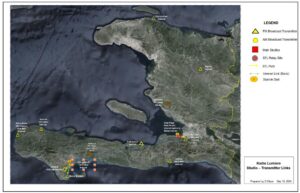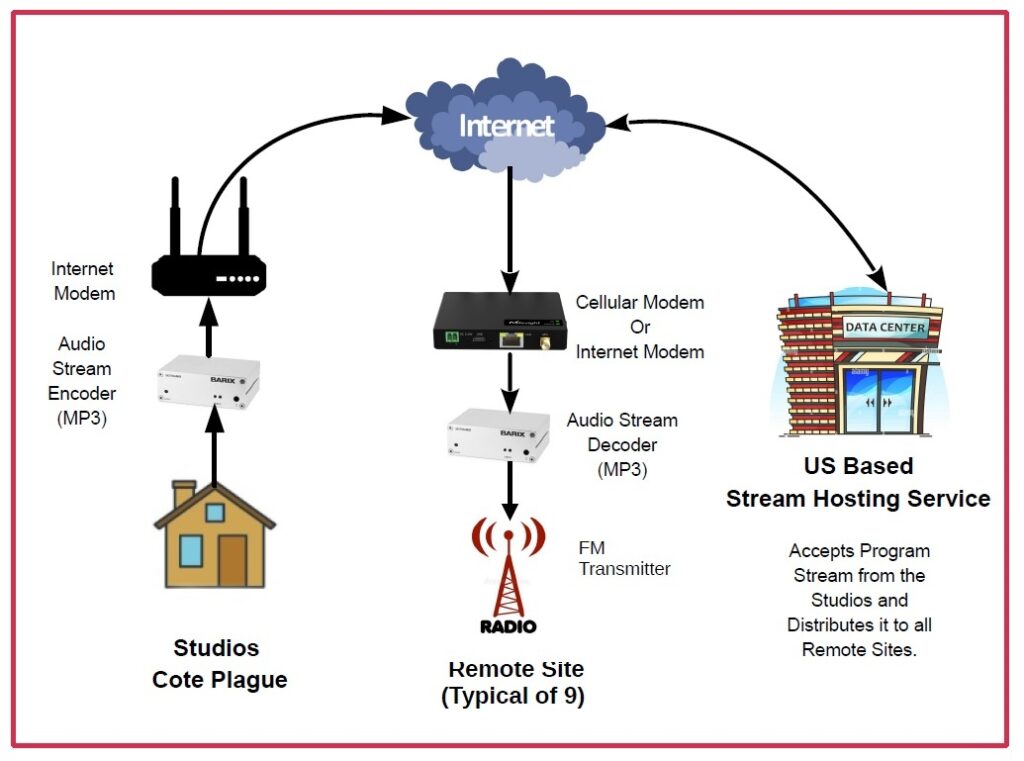In 2023, a key link in Radio Lumiere’s program distribution system—used to deliver audio programming to remote transmitters — failed. This critical link was a relay station located on a mountaintop south of Port-au-Prince. This site was solar-powered and unmanned, and when its equipment failed, the transmitters it served went silent.
As a temporary solution, we turned to an internet streaming service that allowed listeners to hear Radio Lumiere on their cell phones. The service was free but included commercial inserts that were often inappropriate or irrelevant to Haitian audiences.
To restore broadcasts to the transmitter sites, we used cell phones at each remote location to receive the online audio stream and feed it directly into the transmitters. While this stopgap measure worked, it introduced several problems. Continuous charging of a cell phone can cause battery overheating, which carries the risk of serious failure or even fire. Clearly, a more permanent and reliable solution was needed.

Our team began exploring the idea of using the internet not only to reach individual listeners but also to distribute programming directly to the remote transmitter sites. Research revealed many streaming services, and we selected one with an excellent reputation and a very reasonable cost. We arranged for a full-stereo audio stream to carry Radio Lumiere’s programming to all remote transmitters. In addition, the system allows authorized staff to send a live program stream to the main station from anywhere in Haiti with cellular internet service.
Dave Olson, a member of the LOTM Board, and a retired broadcast engineer, devoted many hours to this project in addition to repairing and upgrading equipment. He is now leading the effort to develop remote monitoring for all of our transmitter sites.
This remote-monitoring capability will enable two-way communication with each site, allowing Radio Lumiere and us to track key operational parameters such as:
- Solar battery status
- Transmitter performance and health
- Antenna health
- Building security
- And, potentially, remote switching to a standby transmitter if the main unit fails
Such a system will reduce the need for emergency site visits—especially when travel is unsafe due to gang activity. It will also allow better scheduling of maintenance trips, lowering costs, and improving safety for our technicians.
Because of the dedication of Dave Olson and the support of our partners, Radio Lumiere continues to overcome technical and logistical challenges to bring the message of hope to listeners throughout Haiti.
